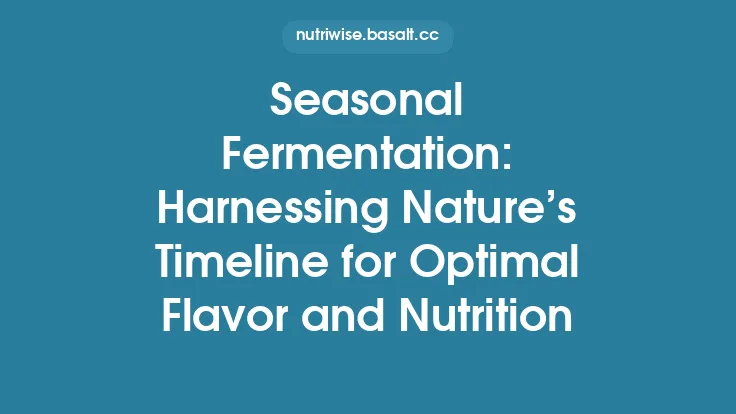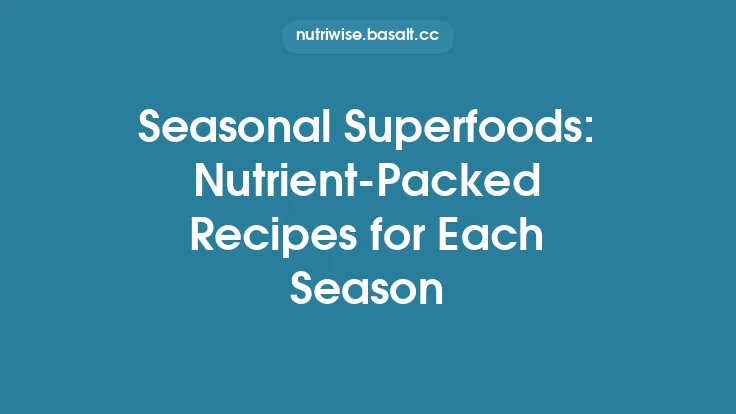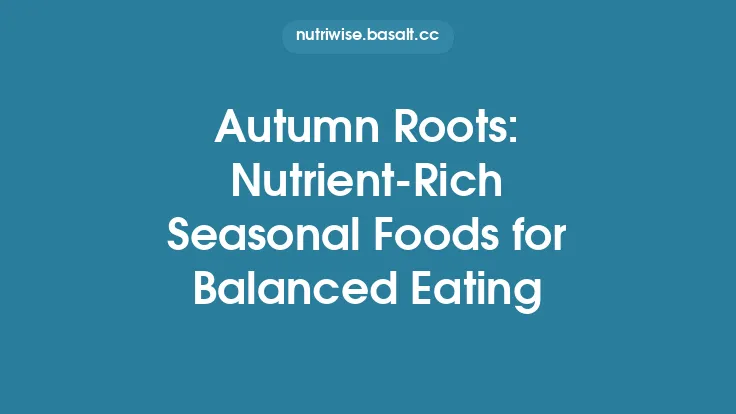The garden has always been more than a plot of soil; it is a living archive of cultural memory, a laboratory of flavor, and a conduit for wellness that stretches from the moment a seed breaks the earth to the final bite on the plate. Across continents and centuries, people have cultivated, harvested, and prepared foods in rhythm with the changing environment, turning the simple act of eating into a celebration of place, time, and community. This article explores how those age‑old garden‑to‑table traditions can be harnessed today to enrich our health, deepen our connection to the natural world, and preserve the cultural narratives that give each season its unique culinary voice.
Cultural Roots of Seasonal Harvests
From the ancient terraced fields of the Andes to the rice paddies of Southeast Asia, the timing of planting and harvesting has been dictated by local climate patterns, religious calendars, and communal rituals. In many societies, the arrival of a new crop is marked by festivals that blend gratitude, storytelling, and shared meals. For example:
- Midsummer Night’s Feast (Scandinavia): Historically, the longest day signaled the peak of berry and herb growth. Communities gathered to bake flatbreads infused with fresh dill, nettles, and wild strawberries, believing the light‑filled night would imbue the food with vitality.
- Lunar New Year Market (China): The first market day of the lunar year showcases early spring vegetables such as mustard greens and bamboo shoots, symbolizing renewal and prosperity. Families prepare dishes that balance bitter, sweet, and sour flavors, reflecting the philosophical principle of harmony.
- Harvest Home (Southern United States): Root crops like sweet potatoes and collard greens are harvested in late summer and transformed into hearty stews that honor the labor of the season and the resilience of the community.
These rituals are not merely decorative; they encode practical knowledge about when foods are at their nutritional apex, how to store them safely, and how to combine them for optimal taste and health.
The Science of Seasonal Phytochemistry
Plants are dynamic organisms that adjust their biochemical pathways in response to temperature, daylight, and water availability. These adjustments manifest as changes in the concentration of phytochemicals—compounds such as flavonoids, carotenoids, glucosinolates, and terpenes—that influence both flavor and health benefits.
- Cold‑Induced Sweetness: In cooler months, many root vegetables increase soluble sugars to protect against frost. This natural sweetening reduces the need for added sugars in dishes, supporting lower glycemic loads.
- Sunlight‑Driven Pigments: Sun‑exposed fruits develop higher levels of carotenoids (e.g., lycopene in tomatoes, beta‑carotene in carrots), which are precursors to vitamin A and contribute vivid orange‑red hues that signal ripeness.
- Stress‑Related Antioxidants: When plants encounter pests or drought, they synthesize polyphenols and glucosinolates as defensive agents. Consuming these compounds can bolster the body’s own antioxidant defenses, aiding cellular repair.
Understanding these seasonal biochemical shifts allows cooks to select produce at its peak potency, thereby maximizing both sensory pleasure and the functional nutrients that support wellness.
Flavor Pairing Across the Calendar
Traditional cuisines have long relied on intuitive flavor pairing that aligns with the seasonal character of ingredients. Rather than adhering to rigid rules, these pairings emerge from generations of tasting, experimentation, and cultural storytelling.
- Earthy Roots with Bright Herbs: In early autumn, the earthiness of turnips or parsnips is brightened by fresh parsley, cilantro, or sage, creating a balance between grounding and uplifting notes.
- Citrus and Early Greens: Late winter salads often combine bitter greens like kale with the sharp acidity of citrus fruits, a pairing that cuts through the heaviness of cold-weather fare and stimulates digestion.
- Sweet Fruit and Spiced Nuts: Summer harvests of stone fruits (peaches, plums) are frequently paired with toasted nuts seasoned with cinnamon or cardamom, a combination that marries natural sugars with warming spices, supporting metabolic balance.
These pairings are more than culinary tricks; they reflect an understanding of how taste, aroma, and texture can influence satiety, mood, and even the body’s hormonal responses.
Mindful Harvesting and Cooking Practices
The act of moving from garden to table can be a meditative practice that reinforces the mind‑body connection. Several mindful techniques have been woven into cultural food traditions:
- Sensory Harvesting: Harvesters are encouraged to listen for the rustle of leaves, feel the firmness of a fruit, and observe color changes. This attentiveness ensures that produce is picked at its optimal stage, preserving flavor and nutrient density.
- Ritualized Washing: In many cultures, washing vegetables is accompanied by a short prayer or a moment of gratitude, turning a mundane task into a reflective pause.
- Slow Cooking: Methods such as low‑temperature braising, stone‑pot simmering, or sun‑drying allow flavors to develop gradually, reducing the need for excessive seasoning and fostering a deeper appreciation for the natural taste of the ingredients.
- Seasonal Aromatics: Adding herbs and spices that are themselves in season (e.g., mint in summer, rosemary in late spring) creates a layered sensory experience that aligns the dish with the surrounding environment.
By integrating mindfulness into each step, the garden‑to‑table journey becomes a therapeutic ritual that can lower stress, improve digestion, and enhance overall well‑being.
Community and Identity: Gardens as Cultural Hubs
Beyond individual health, gardens serve as communal spaces where cultural identity is cultivated and transmitted. In many societies, communal plots function as living classrooms:
- Intergenerational Knowledge Transfer: Elders teach younger members how to recognize heirloom varieties, interpret soil cues, and prepare traditional recipes, preserving biodiversity and cultural heritage.
- Shared Harvest Festivals: Collective meals built from a single garden’s bounty reinforce social bonds and provide a platform for storytelling, music, and dance that celebrate the season’s gifts.
- Culinary Exchange: Migrant communities often adapt their garden practices to new climates, creating hybrid dishes that blend old‑world flavors with new‑world produce, enriching the culinary tapestry of the host region.
These social dimensions underscore that seasonal eating is not merely a nutritional strategy but a conduit for cultural continuity and community resilience.
Integrating Seasonal Flavors into Modern Wellness Routines
While honoring tradition, contemporary lifestyles can still benefit from the garden‑to‑table ethos. Below are practical approaches that marry cultural wisdom with today’s health goals:
- Micro‑Harvest Snacking: Keep a small container of freshly picked herbs (basil, mint, cilantro) in the refrigerator. Adding a few leaves to water, smoothies, or salads provides a burst of phytonutrients without extra calories.
- Seasonal Fermentation: Use freshly harvested vegetables to create kimchi, sauerkraut, or pickles. Fermentation enhances probiotic content, supports gut health, and preserves the seasonal flavor profile.
- Flavor‑First Cooking: Begin recipes with a “flavor base” of seasonal aromatics—think spring garlic and leeks, summer tomatoes and basil, autumn squash and sage. This technique reduces reliance on processed sauces and sodium.
- Cultural Meal Themes: Design weekly meals around a cultural tradition that aligns with the current season. For instance, a “Mediterranean Spring” night featuring artichokes, fava beans, and fresh dill can introduce new flavors while respecting seasonal availability.
- Seasonal Mindful Eating Journals: Record the garden’s produce, the dishes prepared, and personal reflections on taste, mood, and energy levels. Over time, patterns emerge that can guide future food choices toward optimal wellness.
These strategies honor the spirit of seasonal traditions while fitting into busy modern schedules, ensuring that the health benefits of garden‑fresh foods are accessible to all.
Case Studies: Global Traditions of Garden‑to‑Table
1. Satoyama (Japan)
In the satoyama landscape—an interface between forest and cultivated land—small family plots produce a rotating array of greens, beans, and root crops. The Japanese concept of *shun* (seasonality) dictates that each ingredient is celebrated at its peak, often served simply grilled or lightly pickled to preserve its intrinsic flavor. The practice emphasizes respect for the land’s rhythm, fostering a diet rich in diverse micronutrients.
2. La Huerta (Mexico)
Mexican kitchen gardens, or *huertas, are typically located adjacent to homes and feature a mosaic of chilies, tomatoes, corn, and herbs like epazote. The Dia de los Muertos celebration incorporates freshly harvested marigolds and edible flowers, symbolizing the cycle of life and death. The garden’s bounty is transformed into dishes such as sopa de calabaza (pumpkin soup) and tamales* that reflect the region’s seasonal bounty.
3. Mediterranean Terraces (Greece & Italy)
Terraced farms on sun‑kissed hillsides grow olives, figs, grapes, and a variety of leafy greens. Harvest festivals like the Greek *Panigiri* involve communal grilling of vegetables and fish, accompanied by locally produced olive oil and wine. The emphasis on raw or lightly cooked produce preserves heat‑sensitive vitamins and aligns with the Mediterranean diet’s proven health benefits.
4. Ayurvedic Kitchen Gardens (India)
In Ayurvedic tradition, the garden is organized according to the five elements—earth, water, fire, air, and ether. Seasonal planting follows the *Ritu calendar, ensuring that each month’s produce balances the body’s doshas (Vata, Pitta, Kapha). For example, winter’s Karkata* month encourages the use of warming root vegetables and spices like ginger, supporting the body’s internal heat.
These case studies illustrate how diverse cultures have woven garden‑to‑table practices into their social fabric, each offering unique insights into leveraging seasonal flavors for holistic wellness.
Future Directions: Sustainable Cultural Food Systems
As climate patterns shift and urbanization accelerates, preserving the knowledge embedded in seasonal garden traditions becomes ever more critical. Several pathways can help safeguard and evolve these practices:
- Urban Community Gardens: By integrating traditional planting calendars into city green spaces, residents can experience seasonal cycles even in densely built environments.
- Digital Storytelling Platforms: Recording oral histories, recipes, and planting guides in multimedia formats ensures that younger generations can access and adapt ancestral wisdom.
- Seed Sovereignty Initiatives: Supporting the cultivation of heirloom varieties maintains genetic diversity, which is essential for resilience against pests, diseases, and climate variability.
- Cross‑Cultural Exchanges: Collaborative festivals and cooking workshops that bring together different cultural garden traditions foster innovation while honoring the roots of each practice.
Investing in these avenues not only protects cultural heritage but also reinforces the health benefits that arise when people eat foods that are fresh, locally grown, and seasonally appropriate.
By tracing the lineage of garden‑to‑table traditions—from ancient harvest rites to modern wellness practices—we uncover a timeless truth: aligning our meals with the natural cadence of the seasons nurtures body, mind, and community. Embracing these cultural pathways invites us to savor the full spectrum of flavors that each season offers, while honoring the collective wisdom that has guided humanity’s relationship with the earth for millennia.





